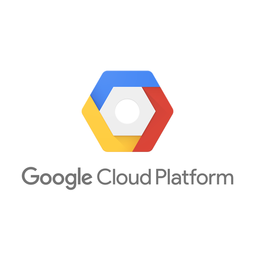Download PDF
Global Tech LED Brings Back Its Best Customers Using Remarketing With Google Analytics
Technology Category
- Analytics & Modeling - Real Time Analytics
Applicable Industries
- Electronics
Applicable Functions
- Sales & Marketing
Use Cases
- Demand Planning & Forecasting
Services
- Data Science Services
The Challenge
Global Tech LED, an LED lighting design and manufacturing company, was looking to increase the adoption of its Solstice® LED modules. These modules are universally compatible with HID fixtures, making them ideal for retrofits. The company had successfully used Google AdWords to increase the number of phone customers. However, it faced the challenge of keeping visitors engaged, bringing them back to its site, and moving them down the purchase funnel. The company wanted to focus on high-potential customers who were most likely to engage and make purchases.
About The Customer
Global Tech LED is an LED lighting design and manufacturing company specializing in LED retrofit kits and fixtures for commercial and industrial lighting. The company is based in Bonita Springs, Florida. It is a rapidly growing LED supplier to U.S. and international markets. The company recently introduced its Solstice® LED modules, which are made in the United States and universally compatible with HID fixtures, making them great for retrofits.
The Solution
To address this challenge, Global Tech LED implemented Remarketing with Google Analytics. The new Instant Activation for Remarketing allowed the team to enable remarketing quickly and easily. The company used Google Analytics’ Smart Lists to automatically identify the users who were most likely to engage, then remarketed to them with more specific product pages. This allowed Global Tech LED to focus on engaging with high-quality users on a deeper level when they returned to the site. The company also started using Google’s Conversion Optimizer to adjust its bids automatically for more conversions. By focusing on campaigns with the best results, it allocated marketing costs more efficiently.
Operational Impact
Quantitative Benefit
Related Case Studies.

Case Study
Remote Temperature Monitoring of Perishable Goods Saves Money
RMONI was facing temperature monitoring challenges in a cold chain business. A cold chain must be established and maintained to ensure goods have been properly refrigerated during every step of the process, making temperature monitoring a critical business function. Manual registration practice can be very costly, labor intensive and prone to mistakes.

Case Study
Cloud Solution for Energy Management Platform-Schneider Electric
Schneider Electric required a cloud solution for its energy management platform to manage high computational operations, which were essential for catering to client requirements. As the business involves storage and analysis of huge amounts of data, the company also needed a convenient and scalable storage solution to facilitate operations efficiently.

Case Study
Leveraging the IoT to Gain a Competitive Edge in International Competition
Many large manufacturers in and outside Japan are competing for larger market share in the same space, expecting a growing demand for projectors in the areas of entertainment, which requires glamor and strong visual performance as well as digital signage that can attract people’s attention. “It is becoming more and more difficult to differentiate ourselves with stand-alone hardware products,” says Kazuyuki Kitagawa, Director of Service & Support at Panasonic AVC Networks. “In order for Panasonic to grow market share and overall business, it is essential for us to develop solutions that deliver significant added value.” Panasonic believes projection failure and quality deterioration should never happen. This is what and has driven them to make their projectors IoT-enabled. More specifically, Panasonic has developed a system that collects data from projectors, visualizes detailed operational statuses, and predicts issues and address them before failure occurs. Their projectors are embedded with a variety of sensors that measure power supply, voltage, video input/ output signals, intake/exhaust air temperatures, cooling fan operations, and light bulb operating time. These sensors have been used to make the projector more intelligent, automatically suspending operation when the temperature rises excessively, and automatically switching light bulbs. Although this was a great first step, Panasonic projectors were still not equipped with any capability to send the data over a network.








